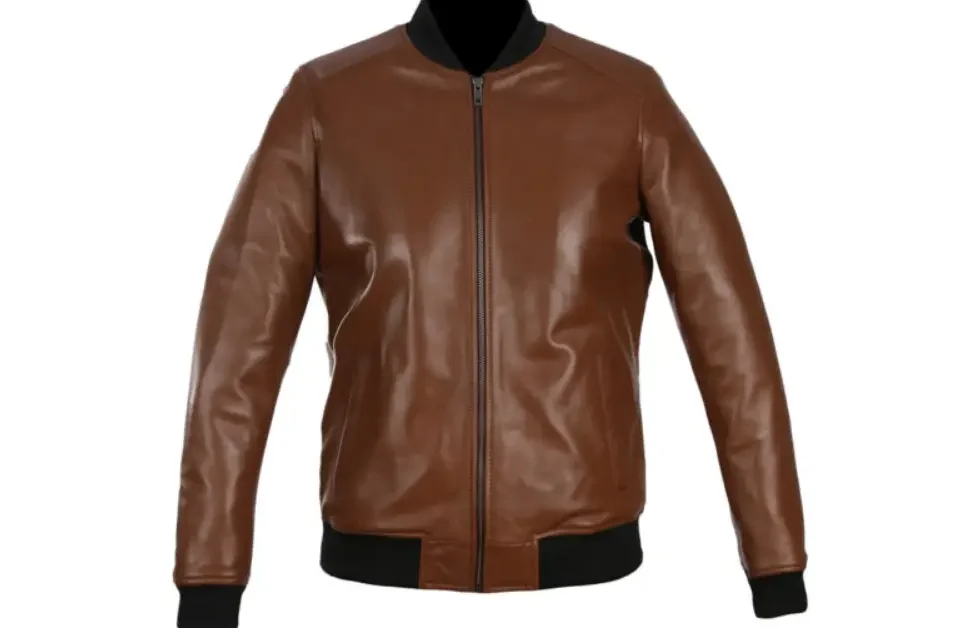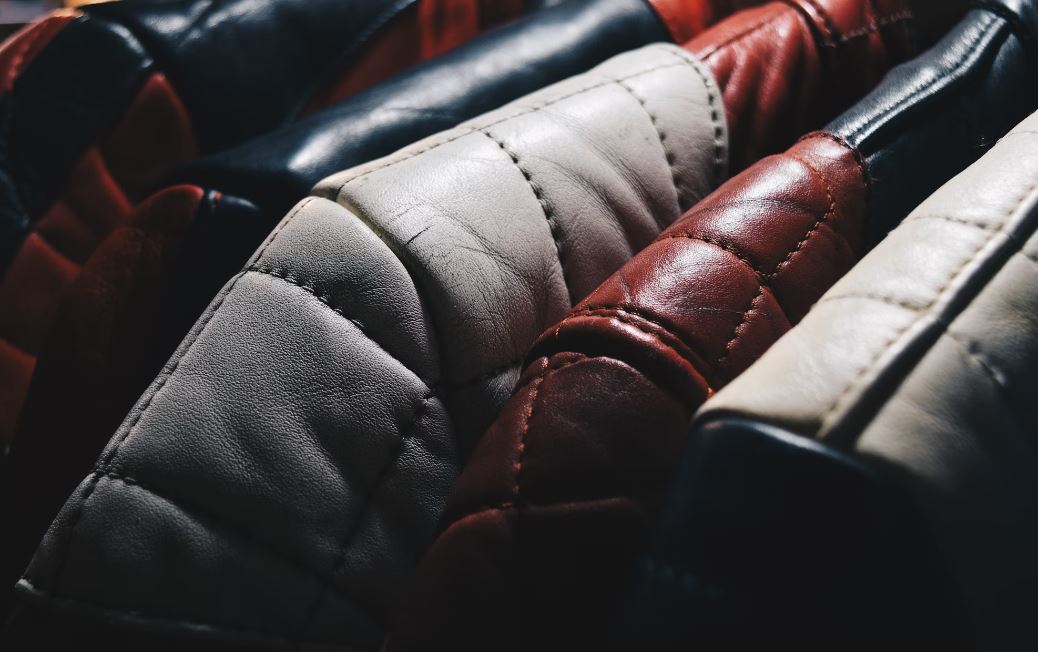
Size & Fit Guide for Leather Jackets
November 18, 2024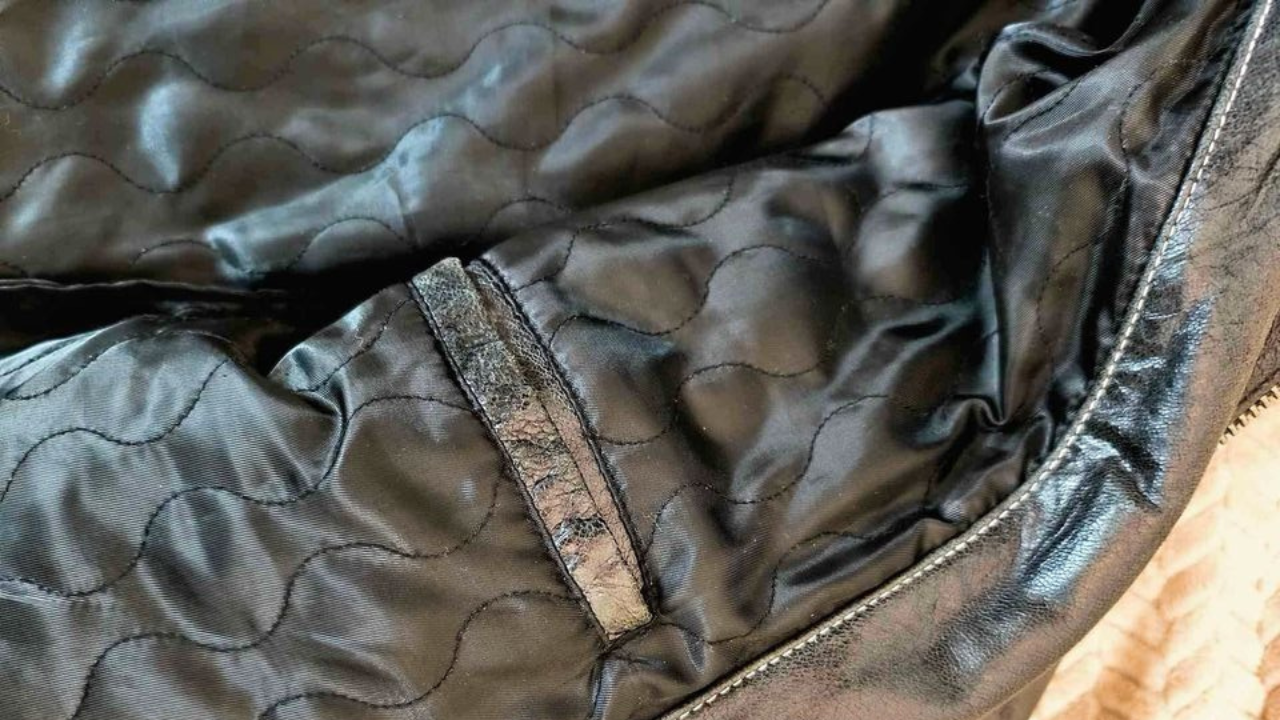
Leather Jacket Lining: Types and How to Choose the Right One
November 18, 2024Pulire una borsa in pelle è essenziale per mantenere la sua bellezza e longevità. Nel tempo, le borse in pelle possono accumulare sporco, macchie e odori sgradevoli. Una pulizia adeguata non solo preserva l’aspetto estetico ma ne prolunga anche la durata.
Rimuovere la muffa dalle borse in pelle è fondamentale per preservarne la qualità e la durata. La muffa non solo provoca macchie visibili, ma genera anche odori sgradevoli che compromettono l’aspetto e l’utilizzo del prodotto. Ignorare questo problema può causare danni irreparabili alla pelle.
In questa guida discuteremo l’importanza della pulizia delle borse in pelle, i materiali necessari e i metodi passo-passo per pulire sia l’esterno che l’interno delle borse in pelle. Inoltre, copriremo le tecniche di asciugatura, l’applicazione della crema protettiva per la pelle, gli errori comuni da evitare e le domande frequenti.
Key Takeaways
- Removing mold from leather bags is essential to prevent stains and bad odors.
- Mold develops in conditions of humidity and poor ventilation.
- Some types of leather, such as untreated leather, are more susceptible to mold.
- Mold appears as black, white, or gray spots, different from regular dirt.
- Products like vinegar and lemon juice help clean mold from leather bags.
- Before cleaning, you need to empty and inspect the bag to identify the affected areas.
- During cleaning, it is important to use as little water as possible to avoid damaging the leather.
- Using silica gel sachets helps prevent moisture and mold formation.
- Regular maintenance of leather bags, including sun-drying, is crucial for preventing mold.
Understanding Mold on Leather
Causes of Mold
Mold forms especially in conditions of high humidity and poor ventilation. Leather bags stored in humid environments, such as poorly ventilated closets or areas with high moisture levels, are particularly vulnerable. Furthermore, certain types of leather, such as untreated or very porous leather, are more prone to mold growth.
Identifying Mold
Recognizing mold is the first step in tackling the problem. Mold on leather often appears as black, white, or gray patches, with a slightly powdery or velvety appearance. It is important to distinguish between mold and common dirt or dust: mold tends to spread quickly, while dirt is usually localized and less invasive.
Preparation for Cleaning
Follow these methods to clean a leather bag that has dirt or mold.
Step 1: Preparation
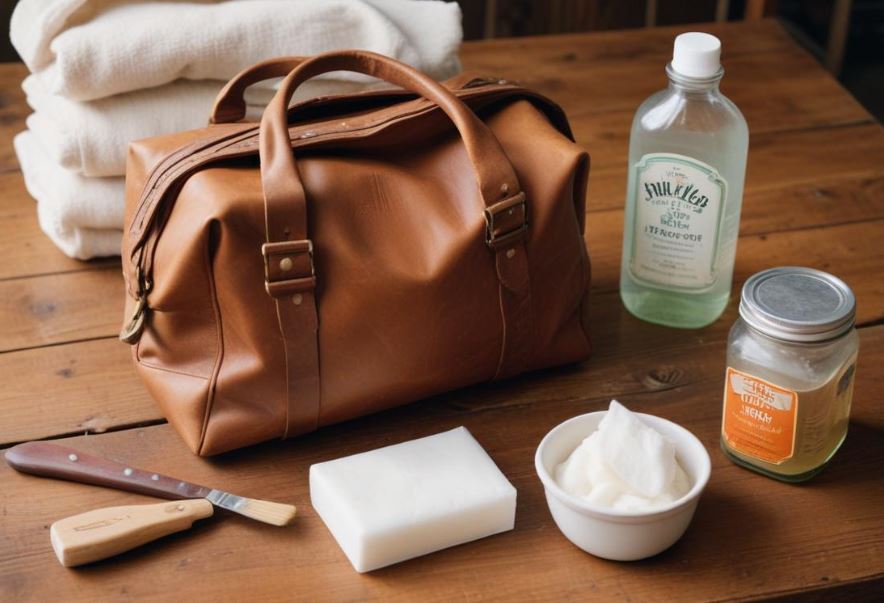
Before starting the cleaning process, gather the following materials:
- Airtight container for interior cleaning
- Soft or microfiber cloths
- Mild soap or leather cleaner
- Distilled water
- Soft-bristle brush
- White vinegar
- Baking soda
- Leather conditioner or protective cream
Step 2: Cleaning the Exterior of a Leather Bag
Cleaning the exterior of a leather bag requires a gentle approach to avoid damaging the leather. Start by using a dry, soft cloth to remove any dirt or dust from the bag’s surface, preventing scratches during the cleaning process.
Then, mix a small amount of mild soap or leather cleaner with distilled water and dampen a cloth with this solution.
Gently clean the leather surface using a damp cloth, taking care not to soak the leather, as excess water can damage it. After cleaning, use a dry cloth to remove any remaining moisture from the bag.
For specific types of leather, such as suede, black or white leather, or to remove mold, there are particular methods to follow. For suede leather, use a soft-bristle brush to gently remove dirt, avoiding water or liquid cleaners.
For black leather, follow the general cleaning method but be thorough as black leather can hide dirt.
For white leather, mix a solution of white vinegar and distilled water, dampen a cloth with this solution, and gently clean the surface to remove stains and brighten the leather.
If the bag has mold, use a mixture of white vinegar and water in equal parts, dampen a cloth with the solution, and clean the affected areas, making sure the bag is thoroughly dried to prevent mold recurrence.
Step 3: Cleaning the Interior of a Leather Bag
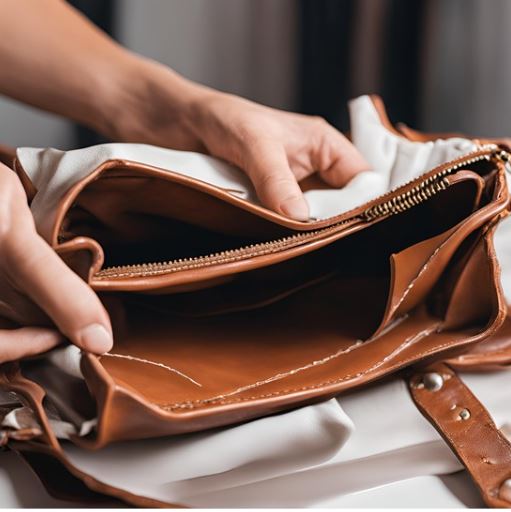
Cleaning the interior of a leather bag is just as important as cleaning the exterior. Start by emptying the bag and removing all items, including any debris. Use a handheld vacuum to remove dirt and crumbs from inside.
To remove odors, place a small amount of baking soda inside the bag, seal it in an airtight container, and leave it overnight. The next day, shake out the baking soda.
If the lining is fabric, use a damp cloth with mild soap to clean it, being careful not to wet the leather.
Step 4: Drying a Leather Bag After Cleaning
Proper drying is crucial to maintaining the quality of the leather. After cleaning, use a dry cloth to remove excess moisture from the bag.

Let the bag air dry in a cool, dry place, avoiding direct sunlight and heat sources, which can cause cracks in the leather. To help maintain the bag’s shape while drying, fill it with paper or a clean cloth.
Step 5: Applying a Protective Leather Cream
After cleaning and drying, applying a protective cream helps nourish and protect the leather. Choose a conditioner or protective cream suitable for the type of leather on your bag.
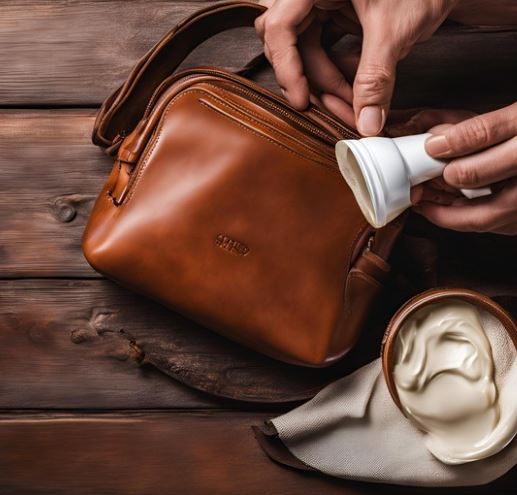
Apply a small amount of cream to a soft cloth and gently rub it onto the leather in circular motions.
Finally, use a clean cloth to buff the leather, enhancing its shine and ensuring an even application of the cream.
Mistakes to Avoid When Cleaning a Leather Bag
Avoid making the following mistakes when cleaning a leather bag:
| Mistake | Description |
|---|---|
| Harsh Chemicals | Avoid cleaners with harsh chemicals that can damage the leather. |
| Soaking the Leather | Excessive water can weaken the leather and cause it to lose shape. |
| Skipping the Conditioner | Not applying a conditioner can lead to dry, cracked leather. |
| Direct Sunlight | Avoid drying the bag in direct sunlight, which can fade and damage the leather. |
NOVIDO offers genuine leather bags for men and women that last for years. Check out our collection of leather bags.
Frequently Asked Questions
How Often Should You Clean Your Leather Bag?
It is recommended to clean your leather bag every 2-3 months to keep it in good condition. More frequent cleaning may be necessary if the bag is used daily.
Can You Use Baby Wipes to Clean a Leather Bag?
While baby wipes are convenient, they often contain chemicals that can damage the leather. It is best to use a specific leather cleaner or a mild soap solution.
How to Remove Stains from a Leather Bag?
For minor stains, a mixture of mild soap and water is usually effective. For tougher stains, like ink or grease, a specific leather cleaner may be required.
Can You Wash a Leather Bag in a Washing Machine?
No, washing a leather bag in a machine can cause irreparable damage. Always clean leather bags by hand using appropriate methods.
How to Prevent Mold Growth on Leather Bags?
Store your leather bag in a cool, dry place. Use a silica gel packet or moisture absorber inside the bag to prevent mold growth.
By following these guidelines, you can ensure your leather bag stays clean, beautiful, and long-lasting. Proper leather care and maintenance not only enhance the bag’s appearance but also protect your investment, allowing you to enjoy your leather bag for many years to come.


